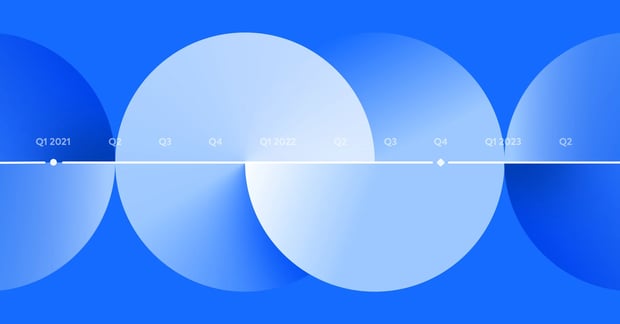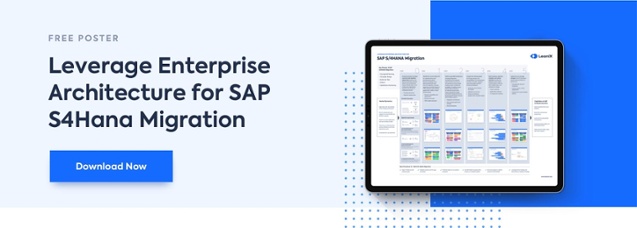
Continuous transformation refers to the ongoing process of change and evolution in an organization or system. This could include changes to processes, technology, culture, or strategy, and is often driven by the need to adapt to new market conditions or stay competitive.
In a business context, it may refer to the implementation of agile methodologies, automation and digitization, and the adoption of new technologies such as AI and machine learning. In general, continuous transformation implies a culture of continuous improvement, where change is embraced as a necessary and ongoing part of the organization's operations.
Continuous transformation vs digital transformation
Continuous transformation and digital transformation are closely related concepts, but they have some important differences.
Digital transformation refers specifically to the integration of digital technologies into all aspects of an organization's operations. This can include automation of processes, use of data and analytics, and the adoption of new technologies such as cloud computing and artificial intelligence. The goal of digital transformation is often to improve efficiency, reduce costs, and create new revenue streams.
On the other hand, continuous transformation refers to the ongoing process of change and evolution in an organization or system. This can include digital transformation, but also encompasses other areas such as organizational structure, culture, and strategy. Continuous transformation is about being adaptable, flexible, and responsive to the ever-changing business environment.
In other words, digital transformation is a subset of continuous transformation, specifically in cases where digital technologies are a key driver of change. Continuous transformation, however, encompasses a broader range of changes that an organization may need to make in order to stay competitive and adapt to change.
Management frameworks that support continuous transformation
There are several management approaches and frameworks that can enable continuous transformation in an organization. Some of the most common include:
Agile methodologies
Agile development frameworks such as Scrum and Kanban are designed to be flexible and adaptable, which makes them well-suited to support continuous transformation. Agile processes focus on continuous improvement, rapid experimentation, and the delivery of value in small, incremental steps.
Lean management
Lean management is a methodology that emphasizes the elimination of waste and the continuous improvement of processes. It is based on the principles of the Toyota Production System and focuses on creating value for the customer while eliminating waste and maximizing efficiency.
DevOps
DevOps is a set of practices that aims to bring development and operations teams together to improve collaboration and speed up the delivery of new software and services. DevOps is based on a culture of continuous delivery and continuous improvement, which can be highly effective in supporting continuous transformation.
Change management
Change management is a structured approach to managing the people side of change, including changes to processes, systems, and technology. Change management frameworks can help organizations to identify and address resistance to change, communicate effectively with stakeholders, and build a culture of continuous improvement.
Continuous improvement
Continuous improvement is a mindset and set of practices focused on making small, incremental changes that add up over time to deliver significant improvements in performance. Continuous improvement frameworks such as Six Sigma and Total Quality Management can help organizations to identify and address waste, improve efficiency, and increase customer satisfaction.
All these frameworks are not mutually exclusive and can be combined to address the specific needs of an organization and its environment.
Technology focused on continuous transformation
There are several types of technology that can support the management frameworks and approaches that enable continuous transformation. Some examples include:
Automation tools
Automation tools such as robotic process automation (RPA) can help organizations streamline repetitive, manual tasks and improve efficiency. This can free up time and resources for more strategic work, such as experimentation and innovation.
Cloud computing
Cloud computing platforms such as Amazon Web Services (AWS), Microsoft Azure, and Google Cloud Platform (GCP) can enable organizations to scale resources up or down as needed, which is essential for organizations that need to be adaptable to changing business conditions.
Collaboration tools
Collaboration tools such as Slack, Microsoft Teams, and Zoom can help remote and distributed teams to work together more effectively. This is particularly important in the context of continuous transformation, as it allows teams to be more responsive and agile.
Data and analytics tools
Data and analytics tools such as Tableau, Power BI, and Looker can help organizations extract insights from data, which can be critical for identifying opportunities for improvement and making data-driven decisions.
Artificial intelligence and machine learning
AI and ML can be used to automate tasks, make predictions, and improve decision-making. In the context of continuous transformation, these technologies can be used to optimize processes, improve product design, and create new revenue streams.
Project and portfolio management tools
Project management tools such as Asana, Trello, Jira, and others, can help organizations manage complex projects, track progress, and ensure alignment with business objectives.
All these technologies can be used to support the management frameworks and approaches that enable continuous transformation. However, it is important to note that technology is not a panacea, and organizations must also focus on building the right culture and processes to support continuous transformation.
The role of EA in continuous transformation
Enterprise architecture (EA) management tools and methods play an important role in supporting continuous transformation initiatives. EA is a holistic approach to managing an organization's IT assets and aligning them with its business goals and strategies.
Some of the ways that EA management tools and methods support continuous transformation include:
Aligning IT with business goals
EA provides a framework for understanding how an organization's IT assets support its business goals and strategies. This can help organizations to identify areas where IT can be optimized to better support the business and to make more strategic investments in IT.
Managing complexity
Continuous transformation often involves significant changes to an organization's IT landscape, such as the introduction of new technologies or the consolidation of existing systems. EA can provide a holistic view of the IT landscape and help organizations to understand the implications of these changes.
Identifying opportunities for innovation
EA provides a framework for understanding how an organization's IT assets support its business processes. This can help organizations to identify areas where IT can be used to drive innovation and create new revenue streams.
Improving governance
EA provides a framework for managing IT assets and ensuring that they are aligned with business goals and strategies. This can help organizations improve governance and reduce the risk of pursuing IT projects that do not align with business goals.
Enhancing collaboration
EA provides a shared language and framework for IT and business stakeholders to understand the organization's technology landscape, which can help to improve collaboration and communication.
EA management tools and methods can support continuous transformation by providing a holistic view of the organization's IT landscape, aligning IT with business goals and strategies, and identifying opportunities for innovation. However, it is important to note that EA management is not a one-time activity, but an ongoing process focused on keep pace with and getting ahead of changes in the business environment.
What to look for in an EA tool
By the same token, all EA tools are not the same. To support continuous transformation initiatives, an EAM tool should have certain features and functionality. Some key features and functionality that an EA management tool should have include:
Modeling and visualization capabilities
The tool should be able to create and maintain a visual model of the organization's IT landscape, including the business, data, application, and technology layers. This model should be flexible enough to continually evolve along with the organization.
Governance and compliance management
The tool should have the ability to manage and enforce governance policies and compliance regulations. This can include tracking compliance with industry standards, such as The Open Group Architecture Framework (TOGAF) or Zachman, and ensuring that IT projects align with the organization's governance framework.
Impact analysis
The tool should have the ability to analyze the impact of changes to the organization's IT landscape. This can include identifying the impact of changes to applications, data, and technology on business processes and the overall IT landscape.
Portfolio management
The tool should have the ability to manage the organization's IT portfolio, which includes managing the lifecycle of IT assets and tracking the status of IT projects. This can include features such as budget tracking, resource allocation, and project management.
Collaboration and communication
The tool should have the ability to support collaboration and communication among IT and business stakeholders. This can include features such as shared workspaces, access control, and version control.
Integration with other tools
The tool should be able to integrate with other tools and technologies that the organization is using such as project management tools, IT service management tools, and IT operations management tools.
Automation and scripting capabilities
The tool should have automation and scripting capabilities to automate certain EA management tasks, such as data import/export, model generation, and report generation.
Scalability and flexibility
The tool should be able to scale and adapt to the organization's changing needs and be able to handle a large amount of data. It should also be able to support different levels of granularity and abstraction.
Naturally, your EA tool should also be able to quickly ingest data – while maintaining high levels of data quality – and generate reports that facilitate IT decision making at both the strategic and tactical level. And above all, it should be easy to use by all stakeholders. Continuous transformation involves the whole organization. Your EA tool needs to reflect that.
Are you ready to continuously transform?
The future is unwritten, as the old saying goes. Thanks to this unpredictability, the question is never if your business or operating model is going to change, but when. What’s more, some other change will inevitably follow the next inevitable change you face.
For this reason, adopting a continuous transformation isn’t one alternative among many; it is the only one that make sense.
To find out how LeanIX can help you plan and manage your continuous transformation journey, book a demo.





